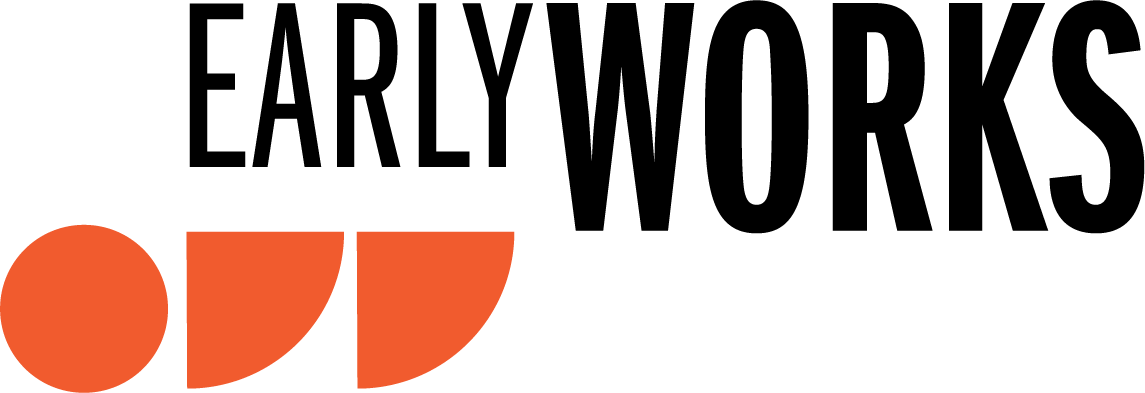7 Strategies for Talent Recruitment in Capacity-Constrained Industries
This is the first in a two-part series about talent attraction and retention and employer branding focused on capacity-constrained industries. Read part two about talent retention here.
LESSONS LEARNED FROM EARLY CHILDHOOD TALENT WORK
Teachers are key to a high-quality early childhood education. Yet, educator positions in Early Head Start and Head Start are chronically hard to fill. With support from the Head Start Innovation Fund, the Head Start Learning Network contracted with EarlyWorks to collaboratively to build new pipelines for talent recruitment in metro Detroit—attracting candidates who hadn’t yet considered a career in early childhood education.
Our lessons learned from the early childhood education space are summarized here and we believe provide insights that can be useful for other capacity-constrained industries such as rural health care, entrepreneurial and small business technical assistance providers, and nonprofits in general, to name a few.
1. Take a system-level approach, when possible.
Head Start Innovation Fund investments led with a system-level approach—from the analysis provided to implementing a public campaign that promoted career opportunities across the field and throughout the tri-county area. This approach allowed the Head Start providers to work collectively on shared goals to lift the profession, build the pipeline for talent, and fill immediate openings. Having a third-party facilitator, EarlyWorks in this case, provided additional capacity for agency human resources staff who do not have the time or budgets for resources such as outreach to higher education influencers, developing Head Start talent brochures, or digital promotion of job fairs and open positions. Additionally, EarlyWorks served as a trusted, neutral participant in the promotion of Head Start careers across the network.
2. Promote the profession centrally.
Previously, there was no clear way of knowing what the specific education requirements were to be a Head Start educator, especially for candidates who were early in their career decision-making process.
Information about becoming a Head Start educator was hard to navigate with various pieces of information spread across national and local provider Head Start websites. The solution was to centralize information to support broad promotion of a career in Head Start. EarlyWorks created a Work With Us section on the existing Detroit Head Start website. This section includes information on how to become a Head Start educator, testimonials from current teachers, and immediate job openings. Since its launch, pages in the Work With Us section are among the highest trafficked on the Detroit Head Start website.
3. Reach prospective candidates earlier in their career pipeline.
EarlyWorks facilitated an HR Talent Group comprised of Head Start providers’ human resources representatives. These meetings provided the space for the human resources staff to discuss shared challenges and consider solutions. The group worked collectively, with project management support from EarlyWorks, on outreach to early childhood education professors at local colleges and universities. Promoting the profession early in the pipeline can ensure more students are graduating with the specific academic credential requirements—in early childhood education or child development—to fill future positions.
4. Host specialty-specific job fairs.
The tri-county agencies hosted three Head Start job fairs, lifting the dozens of immediate job openings with multiple organizations. The success of the messaging and approach was evident from the number and quality of candidates attracted to the job fairs. The early childhood focus was an additional bonus as agencies often participate in job fairs with a broad education focus. Human resource representatives attested that dozens of qualified hires were made as a result of these events.
5. Fast-track credentialing programs.
With support from the Head Start Innovation Fund, several Head Start providers developed comprehensive workforce development programs to move more candidates through the training programs and into employment. Through these programs, candidates (often Head Start parents) are able to work part-time or receive a stipend while they earn their Child Development Associate, an entry-level teaching accreditation. This brings more teachers into the Head Start talent pool.
6. Know and promote what will make your organization appealing to candidates.
Similarly to promoting the profession, it is important at the organizational level to consider the candidate’s perspective as they try to evaluate the organization’s culture alongside the open position. As noted in a Harvard Business Review article, “More than ever, employers need to know and act on the factors that make their company appealing to (a younger generation of) candidates. They have to make it easy for prospects to choose them over their competition.” In our work with early childhood employers, we identify and promote attributes that are unique to a given employer and the available career opportunities. These insights underpin messaging in brochures, on the organization’s website, and on social media channels. Employers can’t rely on a job description alone to attract new candidates. Existing employees can serve as valuable ambassadors in this capacity, sharing their real-world experiences.
7. Adopt a sustained approach to recruitment, positioning as employer-of-choice.
Often, employers rely on career sites, e.g., Indeed.com and Craig’s List, one-time job fairs, and/or short-term advertising to market open positions. The recruitment mindset needs to be sustained to build an organization’s reputation as a desirable employer. Industry research suggests that, “79 percent of jobseekers are likely to use social media for their job search. For younger job seekers who are in the first 10 years of their career, that number goes up to 86 percent.” We have helped providers include recruitment positioning in their ongoing communications, e.g., social media and website, to continuously share details about what makes the organization a great place to work. Over time, this employer branding will help to more quickly attract candidates for immediate openings.
In part two of the series we’ll share strategies for talent retention to help keep those hard-won quality hires. Contact us to talk about your talent recruitment and retention needs.





